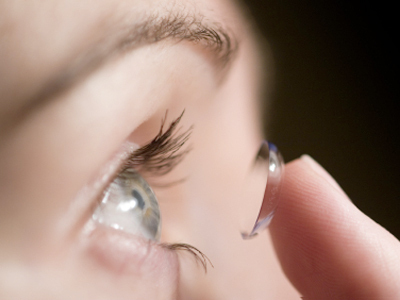[heading centered=”yes” margin_bottom=”no”]Contact Lens Misbehaviors[/heading]
- Overstayed Welcome. Studies indicate around half of soft contact lens users wear lenses longer than prescribed. If you wait until the lenses start to bother you, you waited to long.
- Caught Dirty Handed. The cleanest, daily disposable lenses are all for naught if wearers do not wash their hands before inserting the lenses. The last thing touching the lens before it goes into the eye is your finger.
- Damp Digits. The flip side of dirty hands are wet hands. Sometimes people forget to dry their hands before handling contact lenses. Water can harbor harmful microorganisms that can be transferred onto the lens and subsequently into the eye. Make sure the towel you use is clean.
- No Respect for the System. Not all contact lens care systems are created equal, in terms of disinfection and chemical sensitivities. Some solutions are not compatible with all lens materials. Before grabbing a cheaper, generic solution consider your eye comfort and health.
- A Case of Grimy Cases. Proper contact lens care extends to storage cases, as well. Contact lens cases should be replaced at least every three months and cases should be cleaned and disinfected daily.
- Dozing Dangers. And finally, people snoozing in contact lenses that are not designed to be slept in are at a five times higher risk of developing corneal infections, ulcers and inflammations. Even extended wear lenses carry risk of infections. If you are in a situation without a case and solution, just throw your lenses away instead of sleeping in them.
Contact lenses are an amazing medical device. When treated well and respectively you can count on years of successful wear.
